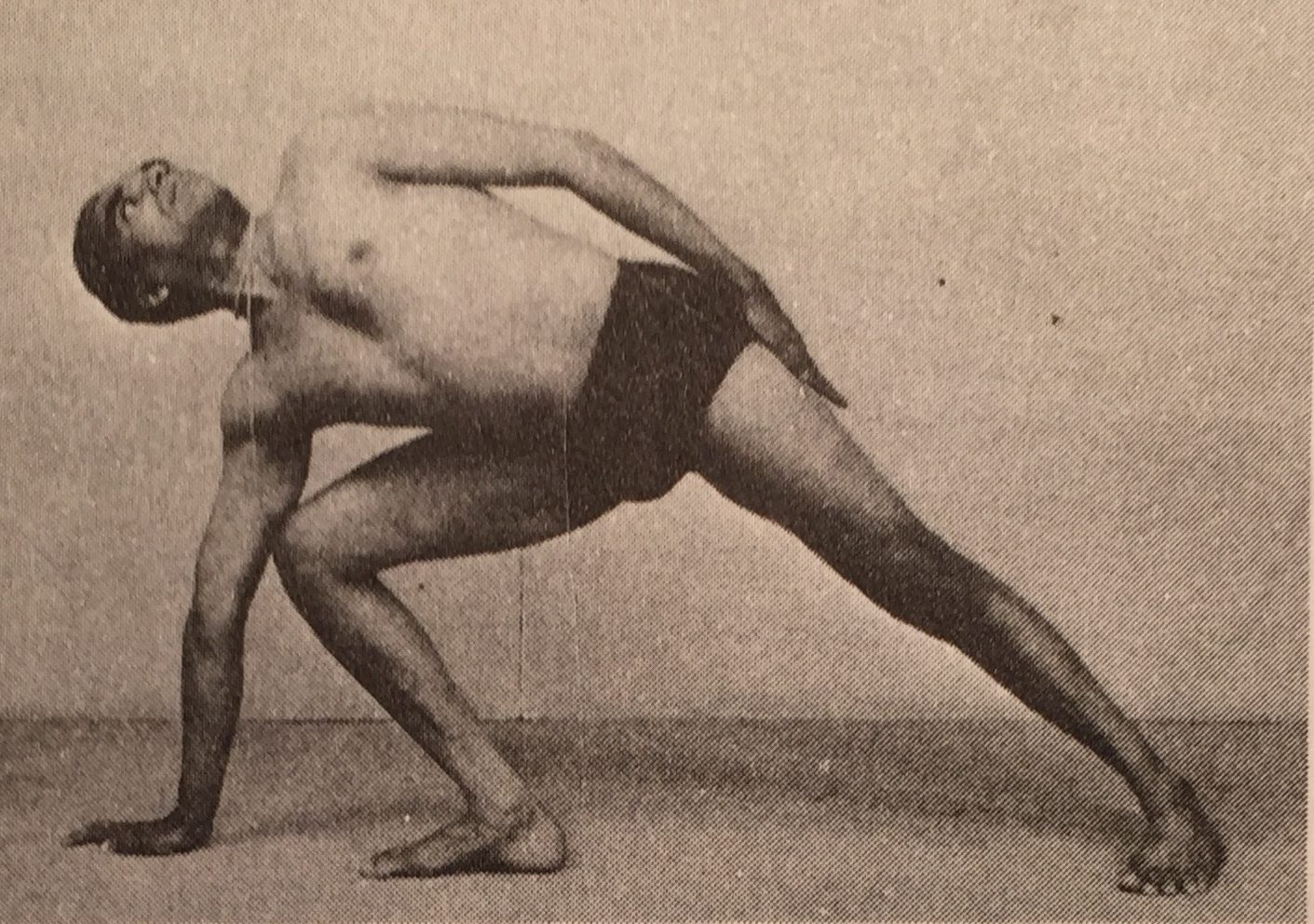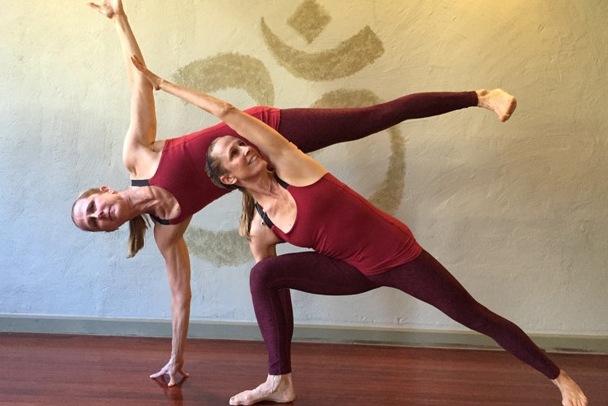In last week’s post I commented on the difference between holding poses for a long time and moving and flowing from one pose to the next. Both are challenging in different ways. As I observe students move through these flowing sequences this month, I can see where they can hold the poses together and where they can’t and the poses fall apart. Moving and flowing requires more than strength and coordination, you also need a clear path and a plan to get there. The path and the plan come from knowledge and repetition; of both the poses and of the sequences.
A clear path comes from knowing the poses: Where are your feet? Your hands? Which way is the torso facing? Are the legs bent or straight? And from knowing what is important in each pose. Students often mistake what is important in a pose. In Side Angle students often think it is more important that the hand is on the floor. The hand should only be placed on the floor if the alignment of the rest of the body can be optimized and maintained.
Let’s take a look at Side Angle Pose, for an example:
In this pose, my front foot is pointing straight ahead and is perpendicular to the arch of my back foot, with my back foot turned in slightly.
My front knee is over its ankle and my back foot is far enough away so that my front thigh is parallel to the floor. If I could not bend my front thigh to 90 degrees then I would have to move my back foot closer. But then, my front hand would have to be on a block. My right forearm is practically hidden from view by my right shin. They should be lined up, with my right knee pressing against my right arm.
My body is a straight line from the outer edge of my left foot up through my left finger tips. My left arm is very close to my face, in a straight line. (I call this “handstand arm”. The arm is in the same position it would be if you were in a handstand.) My neck is in a straight line with my body and just my gaze is turned up.
My torso is facing the camera, not the floor. If you have your hand on the floor and your torso is facing downwards, then your hand is too low and you need to raise it on a block. It is more important that the body is turned sideways than it is that the hand is on the floor.
Make the transition in as few moves as possible
Do you remember that show, “Name That Tune”? It was a game where contestants tried to name a song in as few notes as possible to beat their opponent and win prizes. Think about making the transition from Side Angle to Half Moon with the fewest steps possible.
In order to make the transition form Side Angle to Half Moon Pose, it is important that I not turn my torso to face the floor. It is already facing sideways in Side Angle and it should still be facing sideways in Half Moon. Learn to keep the torso sideways as you make the transition. Learn to stay in alignment. Take a look at this picture of Mr. Iyengar. In this photo, he is taking the intermediate step from Side Angle as he prepares to move into Half Moon. Notice his body position. He lunges deeper into his front knee, reaches his bottom hand forward as he steps his back leg in. The top arm rests along the side of his body as he prepares to step up. Notice how he does not turn his torso to the floor!
Develop the strength in the front leg to drive down through your standing heel and straighten your standing leg as you come into half moon. This is all about quadriceps strength. Notice, in the superimposed picture, that my front foot does not move at all.
Once you come onto your standing leg, expand out through all of your extremities equally.
The alignment of the standing leg is not any different from the shin in Side Angle Pose, it is still vertical. The straight line of the body shifts as the torso moves more horizontal to the floor. The arms, well, they are supposed to be vertical and the upper arm is over the lower arm. As you can see, I need to work on that! But, that is the idea.
To come out of the pose, you reverse the steps and be as mindful as you were when you came into it. People often get hurt in transitions when they let go. Stay engaged until you are back in Tadasana. Think about it this way, rather than engage, let go and then re-engage, stay engaged as you move from one pose to the next.
This is just one of the transitions that I will be working on in class this month, but this is a big one and a fun one to play with. See how smoothly you can shift from Side Angle to Half Moon and back again. Have fun with it. Notice your improvement and celebrate your accomplishments. I’ll see you in class!





